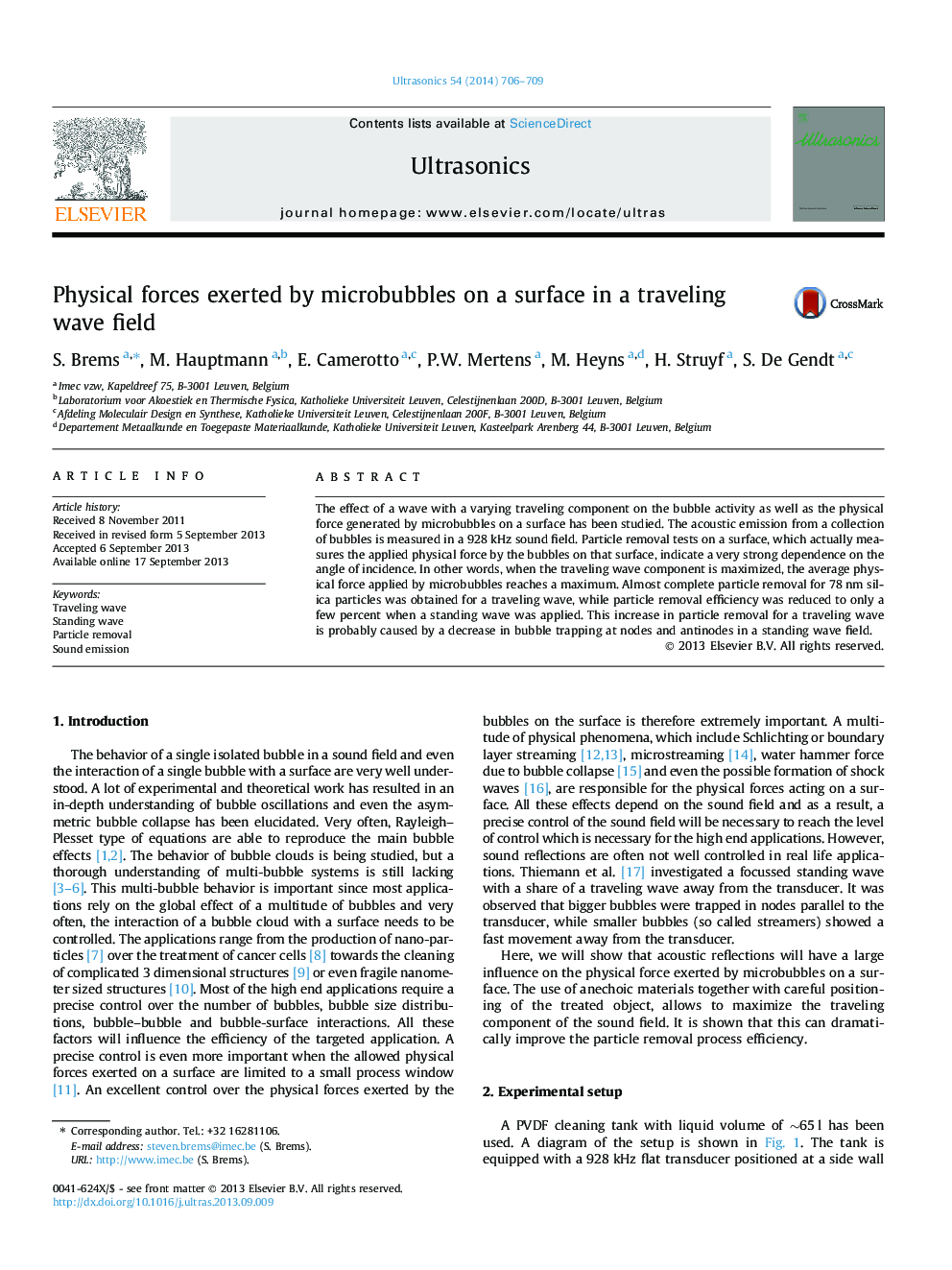| Article ID | Journal | Published Year | Pages | File Type |
|---|---|---|---|---|
| 10690507 | Ultrasonics | 2014 | 4 Pages |
Abstract
The effect of a wave with a varying traveling component on the bubble activity as well as the physical force generated by microbubbles on a surface has been studied. The acoustic emission from a collection of bubbles is measured in a 928Â kHz sound field. Particle removal tests on a surface, which actually measures the applied physical force by the bubbles on that surface, indicate a very strong dependence on the angle of incidence. In other words, when the traveling wave component is maximized, the average physical force applied by microbubbles reaches a maximum. Almost complete particle removal for 78Â nm silica particles was obtained for a traveling wave, while particle removal efficiency was reduced to only a few percent when a standing wave was applied. This increase in particle removal for a traveling wave is probably caused by a decrease in bubble trapping at nodes and antinodes in a standing wave field.
Related Topics
Physical Sciences and Engineering
Physics and Astronomy
Acoustics and Ultrasonics
Authors
S. Brems, M. Hauptmann, E. Camerotto, P.W. Mertens, M. Heyns, H. Struyf, S. De Gendt,
